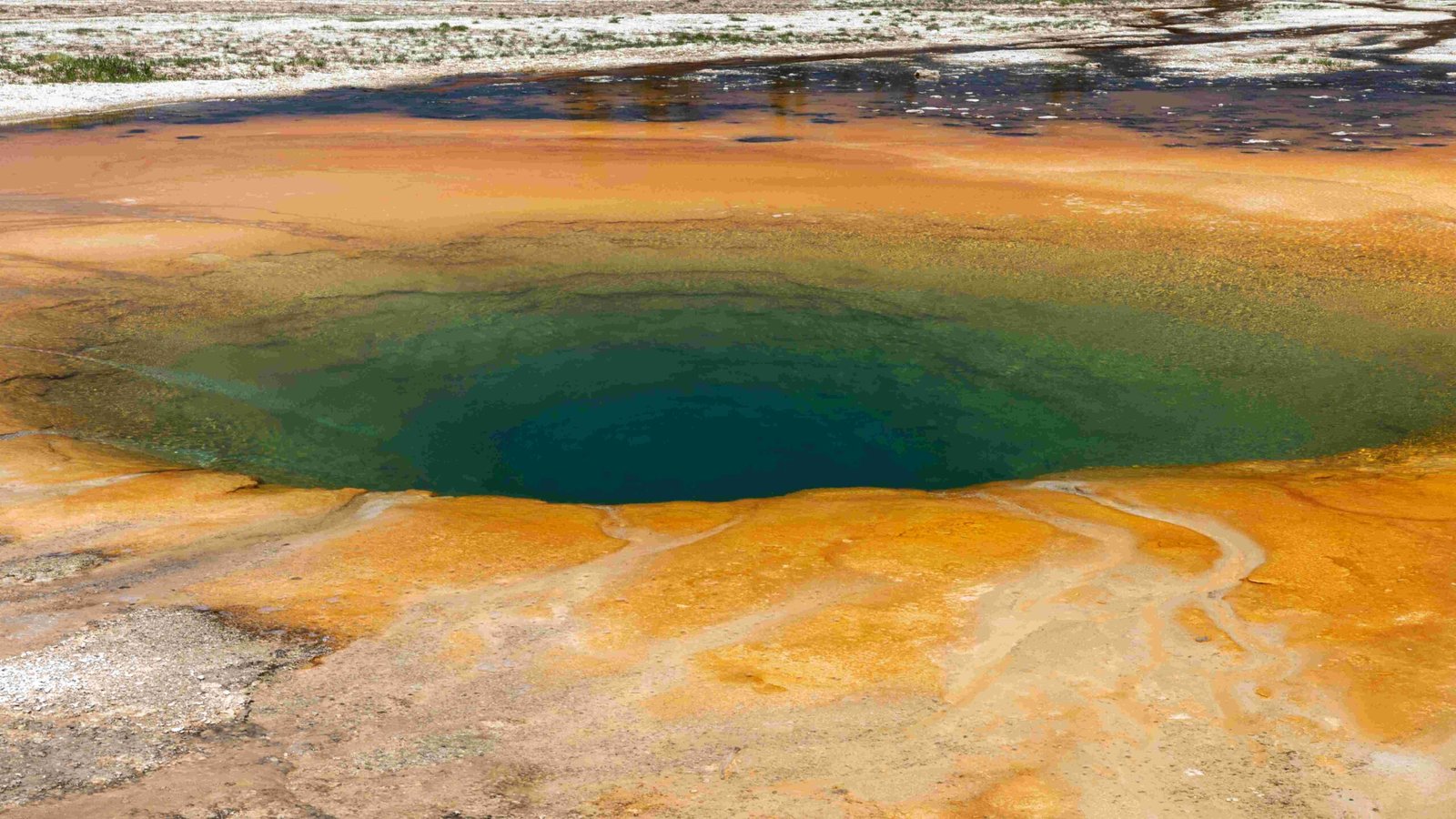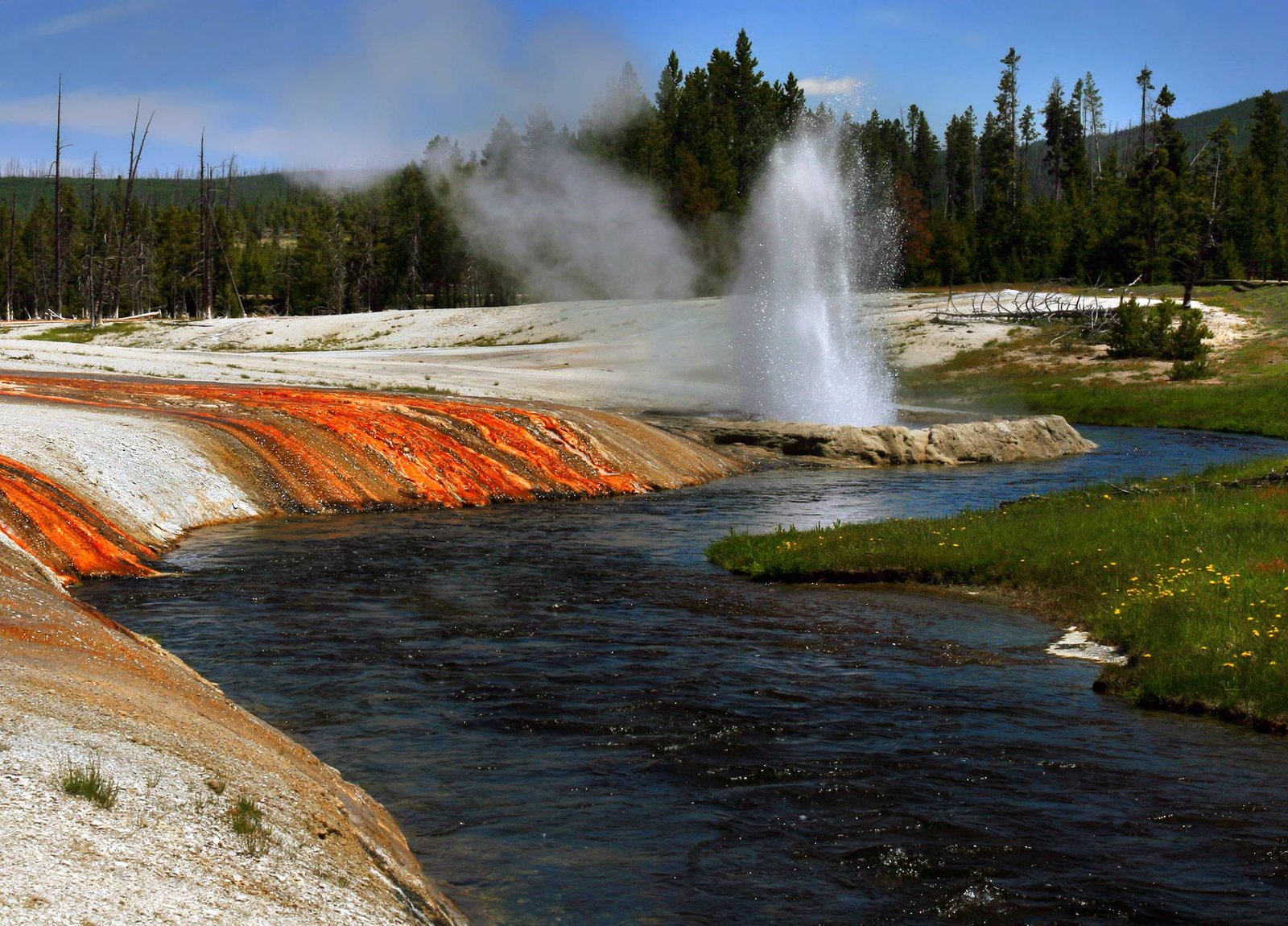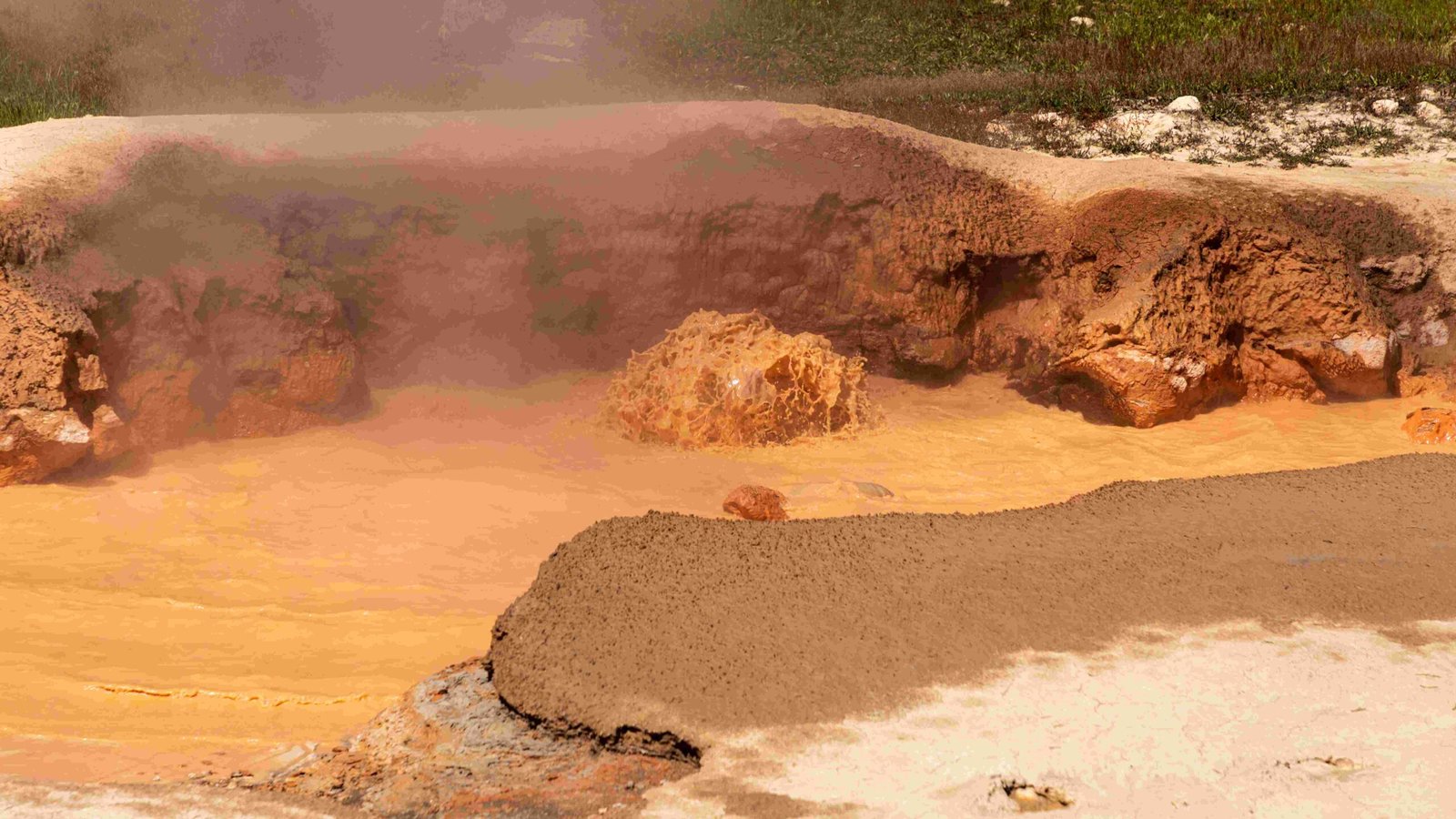Octopus Spring in Yellowstone National Park is a remarkable geothermal feature located in the Lower Geyser Basin. Known for its unique shape and vibrant microbial mats, this hot spring offers a fascinating glimpse into extreme environments. With temperatures ranging from 95°C at the source to 50°C in its runoff channels, Octopus Spring supports diverse thermophilic microorganisms, making it a prime location for scientific research and a captivating sight for park visitors.
What are the Key Features of Octopus Spring?

Octopus Spring stands out among Yellowstone’s numerous geothermal features due to its distinctive characteristics:
- Complex Shape: The spring’s intricate form resembles an octopus, hence its name.
- Temperature Gradient: Ranging from near-boiling at the source to cooler temperatures in the effluent channels.
- Alkaline pH: Measures at 8.5, creating a unique chemical environment.
- Silica-Rich Water: High dissolved silica content contributes to the spring’s ecosystem.
- Colorful Microbial Mats: Vibrant bacterial and archaeal communities thrive in the runoff channels.
How Does the Temperature Vary Across Octopus Spring?

The temperature distribution in Octopus Spring is crucial to its ecological diversity:
| Location | Temperature Range |
|---|---|
| Source | 95°C (203°F) |
| Upper Channels | 72-95°C (162-203°F) |
| Lower Channels | 50-66°C (122-151°F) |
This gradient allows for a variety of microbial life adapted to specific temperature niches.
What Makes the Microbial Mats of Octopus Spring Unique?
The microbial mats in Octopus Spring are a testament to life’s adaptability:
- Layered Structure: Different microorganisms occupy specific depths based on temperature and light availability.
- Photosynthetic Upper Layer: Cyanobacteria and other phototrophs thrive where temperatures are below 72°C.
- Anoxic Lower Layers: Non-photosynthetic organisms inhabit deeper, oxygen-poor regions.
- Color Variations: The mats display a range of colors due to different pigments in the microorganisms.
Why is Octopus Spring Important for Scientific Research?
Octopus Spring serves as a natural laboratory for scientists:
- Extremophile Studies: Provides insights into life in extreme conditions.
- Evolutionary Research: Helps understand early life on Earth and potential for life on other planets.
- Biotechnology Applications: Thermostable enzymes from these microbes have industrial uses.
- Geochemical Interactions: Offers a window into the interplay between geology and biology.
How Can Visitors Safely Observe Octopus Spring?
To ensure safety and preservation:
- Stay on designated boardwalks and trails.
- Do not touch or disturb the water or microbial mats.
- Observe from a distance to protect both yourself and the delicate ecosystem.
- Follow all park ranger instructions and posted signs.
What is the Best Time to Visit Octopus Spring?
Consider these factors when planning your visit:
- Season: The spring is accessible year-round, but winter may limit access.
- Time of Day: Early morning or late afternoon for optimal lighting conditions.
- Crowd Levels: Visit during shoulder seasons (spring or fall) for fewer tourists.
Are There Guided Tours Available for Octopus Spring?
While specific tours for Octopus Spring are limited due to its research status, visitors can:
- Join ranger-led programs in the Lower Geyser Basin.
- Participate in general geothermal feature tours that may include information about Octopus Spring.
- Attend educational talks at nearby visitor centers to learn more about the area’s hydrothermal features.
What Other Attractions are Near Octopus Spring?
The Lower Geyser Basin offers several other points of interest:
- Mushroom Spring (adjacent to Octopus Spring)
- Great Fountain Geyser
- White Dome Geyser
- Firehole Lake Drive (scenic route)
- Fountain Paint Pot area
How Does Octopus Spring Contribute to Yellowstone’s Ecosystem?
Octopus Spring plays a vital role in the park’s broader ecosystem:
- Nutrient Cycling: Microbial activities contribute to local nutrient cycles.
- Habitat Creation: The spring’s outflow creates unique microhabitats for various organisms.
- Geothermal Indicator: Helps scientists monitor the park’s overall geothermal activity.
- Biodiversity Hotspot: Supports rare and specialized life forms found nowhere else on Earth.
What Conservation Efforts Protect Octopus Spring?
To preserve this unique environment:
- Access Restrictions: Limited public access to protect the delicate ecosystem.
- Research Regulations: Strict protocols for scientific studies to minimize impact.
- Education Programs: Informing visitors about the importance of geothermal features.
- Monitoring: Regular assessment of water chemistry and microbial populations.
Octopus Spring in Yellowstone National Park remains a captivating subject for both scientists and nature enthusiasts. Its complex ecosystem, shaped by extreme conditions, continues to yield new discoveries and insights into the resilience of life. As visitors marvel at its beauty and researchers unravel its mysteries, Octopus Spring stands as a testament to the wonders of our natural world and the importance of preserving such unique environments for future generations.
References:
1. https://astrobiology.nasa.gov/news/discovering-a-new-life-form-in-the-hot-springs-of-yellowstone/
2. https://serc.carleton.edu/microbelife/extreme/extremeheat/yellowstone.html
3. https://microbewiki.kenyon.edu/index.php/Yellowstone_Hot_Springs

